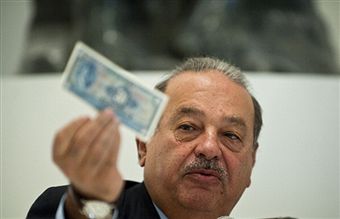The
state backed behemoth that is shaping the nuclear industry
When E.U
heads’ of state promised to reduce carbon emissions by 80% by 2050, the world
seemed a more agreeable place. The dilemma now flaring up between nuclear, wind
and fossil fuels has left some wondering how the E.U intends to keep the lights
on.
One
company which will shape the nuclear future is the French state colossus, EDF.
The company owes its origins to a nationalisation of over 1700 energy minions
by the then industry minister Marcel Paul. The French government used the firm
to drive an economic revival following WW2. It has been of “strategic”
importance ever since.
However,
beginning in 1999, the firm has gradually been exposed to market forces. EDF
was compelled to share its monopoly over French energy markets, ceding 20%,
under the instruction of the E.U commission. This was followed in 2004 by the
floating of a 15% stake in the firm on the CAC 40. (See graph)
 |
| Just
Fukushima and the Eurozone? |
Private
investors have been unimpressed. From a high of €80
the stock has dwindled to €16 today. Mr Porgolio, group CEO, cites the Eurozone
debacle and Japan’s Fukushima disaster as drags on performance. This has some
substance to it, Since Fukushima, rival firms’ stocks have also plummeted, yet
EDF leads the pack in poor performance.
The nouveau
président français may have something to do with this. Prior to the
election, François Hollande promised to cut nuclear energy dependency from 75%
to less than 50%. Yet on arrival to the Elysee Palace this has become more an “aspiration” than a
“policy” as Monsieur Hollande seeks to grapple with réalité.
Policy or not, Hollande is not Porgolio biggest fan. The EDF
CEO campaigned rigorously for the now departed Sarkozy and slapped down
Hollande’s energy plans as “unrealistic”. Rumours have sprung up suggesting
Porgolio may not see out his 5 year term to 2014.
The double edged sword for EDF is that it exists at the
behest of the French government. The firm advanced in the 70s as France looked
to reduce its exposure to oil price volatility. Its fortunes may now turn the
other way.
Don’t write nuclear or EDF off just yet
Just as Hollande begins to grapple with the practicalities of
government amidst the see of promises he made in opposition, so the UK
coalition are waking up to the implications of their own green energy promises.
The Liberal Democrats have long modelled themselves as the
clean energy party, and the Conservatives have played up their green credentials,
yet their coalition is looking likely to commit the country to a new era of new
nuclear power stations. The Hinckley point plant in Somerset next year, should
a deal with EDF be agreed, will be the first since 1995.
EDF UK
head, Vicent De Rivaz, sees the Somerset deal as crucial to the group’s
attempts to diversify from French income dependency and the UK government’s
efforts to move away from fossil fuels.
Still,
the plan could go awry. When the Blair government announced its commitment to
new nuclear, energy back in 2007, energy giants boasted they could build
without any sort of subsidy. This now looks misguided as additional safety costs
following the Fukushima disaster are driving up the cost of nuclear. A look across
the channel reveals just how costly it may turn out to be. Flamanville, the
site of a new nuclear plant managed by EDF, has run over budget, by around
double, and time, by over 4 years. This hardly bodes well for the new nuclear
revolution.
It is therefore
unsurprising that not many firms are willing to get involved in British nuclear
renovation. EDF and Centrica, a rival firm, are now the only two companies
willing to part with capital. Hence the government is trying to concoct schemes
to tempt investment. The latest idea is a “strike price” for the price of
energy per megawatt hour (MW/H). Essentially, the government would subsidies
firms if the price of energy were to fall below the agreed price.
EDF
agree in principle to this pricing strategy, but not in detail. The current
price of energy stands at 41 MW/H. EDF is hoping to get a strike price of
potentially over £100 MW/H. Given that offshore wind generation comes in at
around £130 MW/H some are wondering whether the government should bother with
nuclear at all.
EDF also
faces grumbles from its UK customers. The firm was recently fined over sales
practices to the tune of £4.5m. Customers on This Is Money, a popular consumer finance website, rate the firm
bottom of the big six for customer service every year. With energy bills
shifting from £422 in 2004 to £1258 today, expect many more irate consumers.
Like its
main backer, EDF suffers from large debts and low productivity. Some are hoping
nuclear will make a comeback in a more efficient form. Whether it does, is
partly down to EDF.
